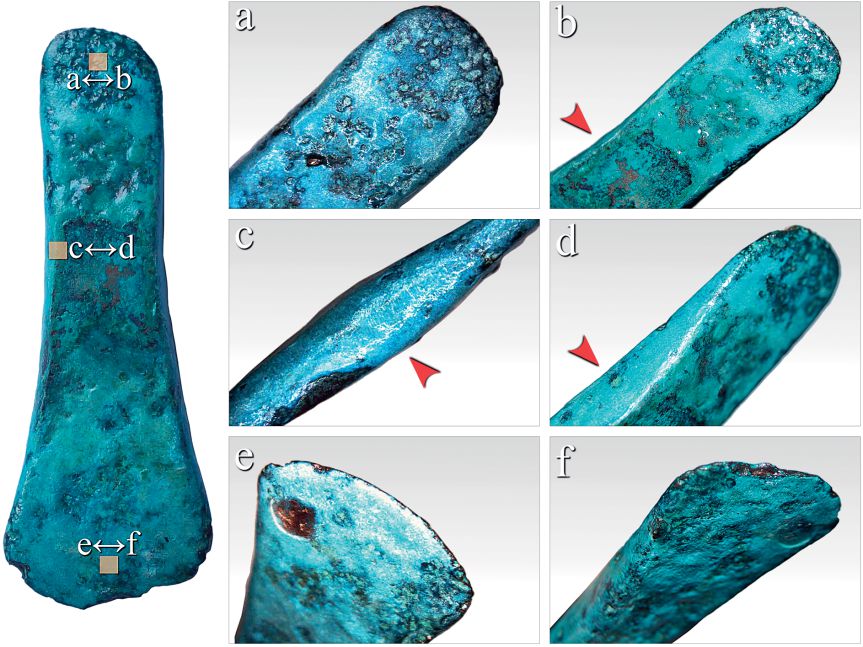The Wrocław–Szczytniki flanged axe from Koperniki
A contribution to archaeometallurgical studies on the Únětice axes in Poland
DOI:
https://doi.org/10.35686/AR.2017.31Keywords:
Early Bronze Age, Únětice culture, flanged axe, Wrocław–Szczytniki type, archaeometallurgy, metallographyAbstract
This work is a contribution to archaeometallurgical studies on the Únětice axes in Poland. The research was initiated by a single find of the Wrocław–Szczytniki flanged axe recovered from the village of Koperniki (Lower Silesia, Poland). The axe was examined in terms of raw–material profile (ED–XRF) as well as its micro-, and macrostructure (OM). The spatial distribution, deposition context, and raw–material profiles of the remaining Únětice axes from Central-Eastern Europe, with a special emphasis put on those recovered from the Polish land, were also juxtaposed throughout this work. It has been established that the axe from Koperniki was cast in standard Sn–bronze alloyed from so-called Eastern Alpine copper, and thus, the axe may be considered as one of the very last Wrocław–Szczytniki specimens emerging in the Odra and Vistula Basins. Although the casting was intensively plastic-worked out, the axe from Koperniki itself was not used in the past. Hence, the statement that the axe was intended to serve as a prestigious or insignia metal object rather than fulfil utilitarian functions seems reasonable. The obtained conclusions indicate that the single wet–findings of the Wrocław–Szczytniki axes (including the specimen from Koperniki) reflect indeed the aquatic hierophanies of single hoards. Furthermore, having analysed the results of the research performed we can state that the raw–material profile of some Únětice axes presents the chronological sensitivity, and thus, confirms their usability for raw-material dating, especially concerning so-called single finds.
Downloads












